What Makes an Insulated Grocery Bag Truly Easy to Clean & Durable (Material Choice Is Key!)
2025-06-27
If you are a buyer sourcing insulated grocery bags, you know the interior lining isn’t just a layer—it’s the front-line defender against spills, stains, odors, and bacterial growth.
A poorly chosen or constructed lining might result in frustrated customers, negative product reviews, leaks, lingering smells, and costly returns.
Minghui Bags is a leading manufacturer of cooler bags. We know from experience that a lining that is genuinely easy to clean and built to last is key for a successful cooler bag.
I want to break down some critical aspects of this issue.
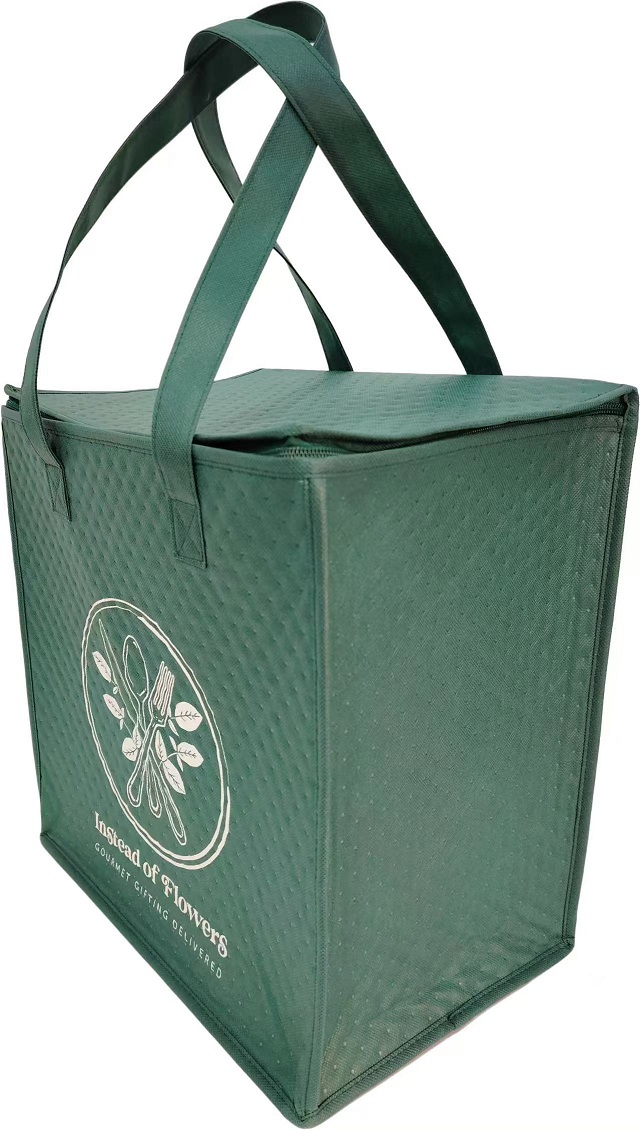
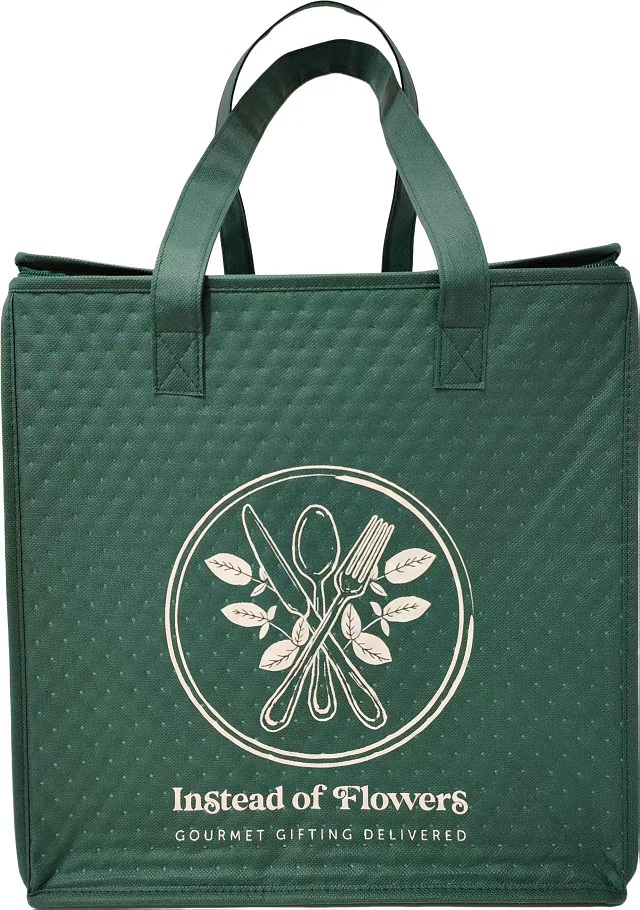
Why the Lining Is the Unsung Hero
First Line of Defence: As the lining directly contacts food, drink, and ice packs, it must prevent leaks from soaking into the insulation layer and exterior fabric.
It also needs to resist staining, oil, juices, or food dyes.
Food Safety Essentials: A non-porous, easy-to-clean surface prevents bacteria from growing, which is crucial for storing meat, dairy, and perishables.
Longevity and Satisfaction: If a cooler bag lining often cracks, peels, or permanently stains, it will turn a functional bag into a disappointment.
Durability is something that directly impacts the lifespan of the insulated grocery cooler and end-user satisfaction.
B2B buyers of insulated totes must be aware of the need to find a balance between easy maintenance and robust long-term performance.
If the lining of your insulated grocery bag fails, it will directly impact your brand image.
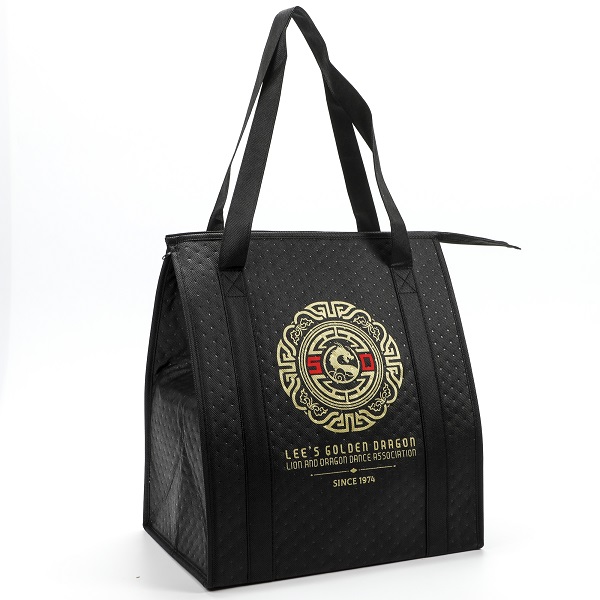
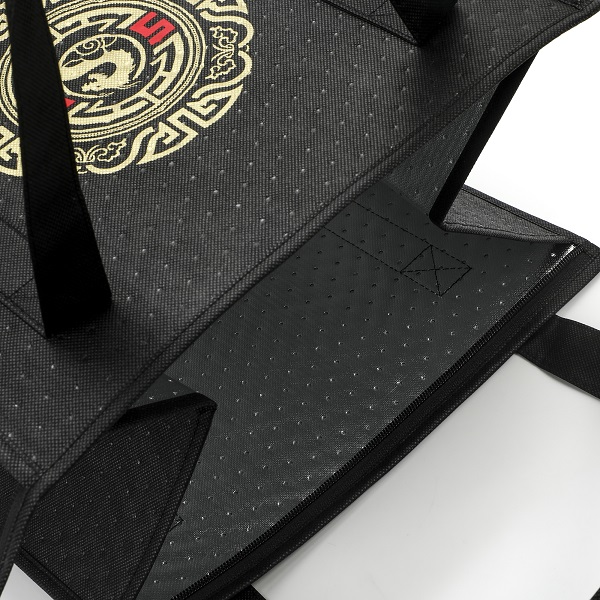
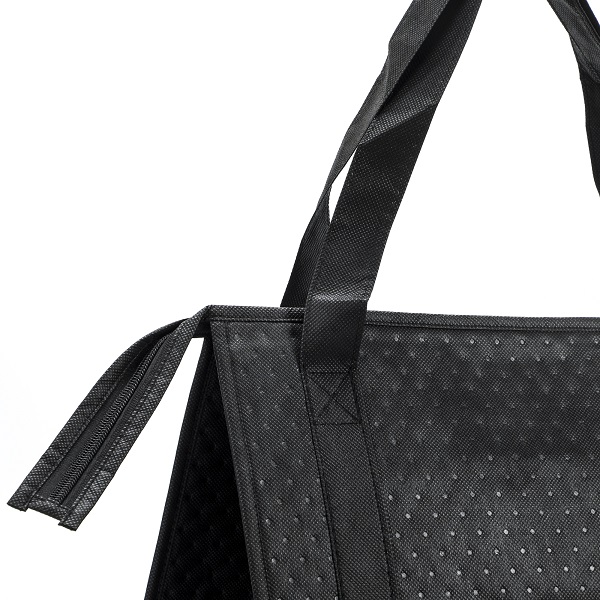
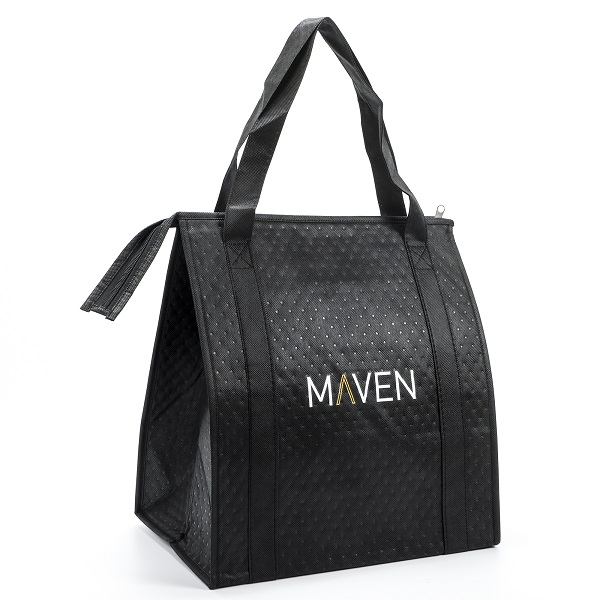
What Makes PEVA the Ideal Liner for Insulated Grocery Bags?
The core material is key to determining lining performance; not all plastics or linings are created equal.
PEVA has become the industry’s standard lining, and that happens for a reason.
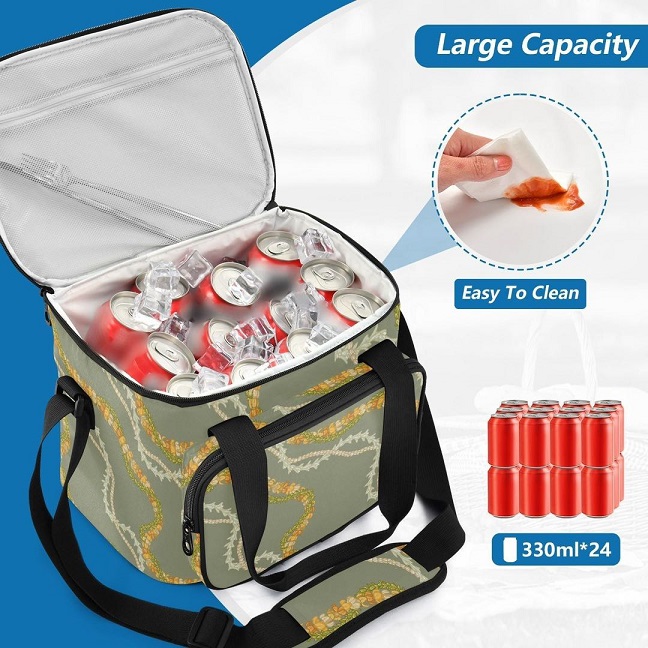
Super Easy to Clean: PEVA’s non-porous, smooth surface is its superpower. You can wipe away spills effortlessly with a damp cloth.
Common spills from coffee, grease, and food coloring are easy to clean.
Durability Engineered: Unlike cheap plastics, PEVA is flexible and tear-resistant. PEVA lining can withstand repeated folding and collapsing without becoming brittle or cracking.
PEVA can also maintain its integrity across extreme hot and cold temperatures.
FDA-Compliant Material: PEVA is food-grade safe and ideal for manufacturing. It heat seals beautifully and therefore achieves leakproof capability.
You can bring down the cost to a very affordable level when you bulk manufacture insulated grocery coolers using PEVA lining.
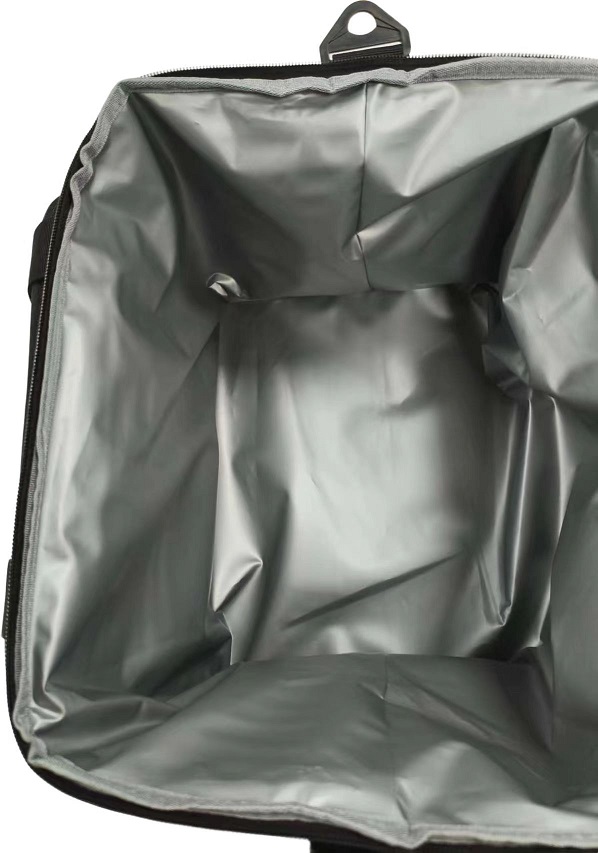
Can Aluminum Foil Alone Handle the Demands of Insulated Grocery Bags?
Many cooler bags use aluminum foil as lining—it is cheap, and that’s why it is so widely used. However, using aluminum foil alone is vulnerable.
Scratches and punctures can trap grime, making thorough cleaning difficult. Aluminum foil acts as a very good barrier, blocking external odors and moisture ingress.
However, it can delaminate or tear easily when used alone.
Are Some Liner Materials Actually Hurting Your Cooler Bag’s Performance?
There are a couple of materials you should avoid using as lining—one is thin PVC and the other is uncoated fabrics.
Uncoated fabrics can absorb stains and odors like a sponge and can harbor bacteria—the opposite of easy cleaning.
Why Isn’t Good Material Enough for a Leak-Proof Grocery Bag?
Minghui Bags thinks even the best material fails if the construction of the insulated grocery bag is poor. And there are 3 key aspects to achieve that:
A) Heat-Sealing Is a Must: If you apply stitching to PEVA lining, that will leave behind needle holes that can let liquids seep through.
So that’s why a better approach is heat sealing. Heat-sealed PEVA lining bonds layers of lining material together without any holes.
This creates a solid, waterproof seal that keeps liquid wicking from happening. This is almost a must-have in any leak-proof insulated grocery cooler bag.
B) Smooth Lining Makes Cleanup Easy: A smooth lining, such as the one made from PEVA, helps liquids roll off easily; therefore, spills can be wiped off in seconds.
C) Good Zipper: Zippers are often a weak point of a bag. That’s why we introduce smart features like zipper covers or protective flaps to keep food and dirt out of the zipper track.
In addition to that, we also use strong, smooth-running zippers that won’t catch or tear the lining—a common problem that will shorten an insulated grocery bag's lifetime.
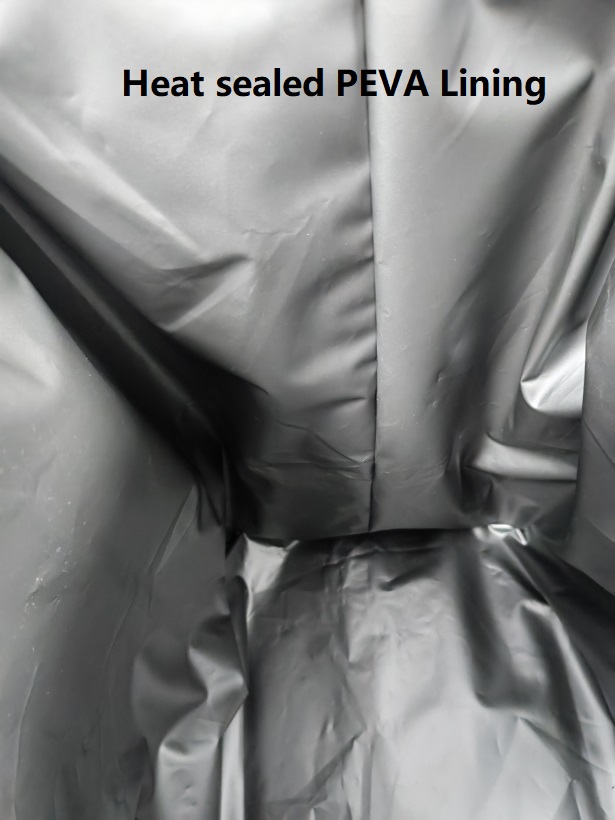
Conclusion: Why Smart Engineering Means Better Value for B2B Buyers
An insulated grocery tote bag that is truly easy to clean and built to last doesn’t happen by chance.
It takes thoughtful design, using the right material, using the right construction methods, and testing every step to make sure it performs.
It helps B2B buyers to find a worthy cooler product once you pay attention to lining quality at the very beginning.
It is beneficial for buyers to work with a manufacturer like us who aims to make cooler bags for long-term use. We make lining quality our top priority when manufacturing cooler bags.
Whether you are looking for large grocery totes, eco-friendly reusable cooler bags, or bulk orders of certain insulated shopping bags, we are here to help you stand out among so many market competitors.
So get in touch with us through email or WhatsApp. We will provide you a quote, build you a sample, and offer other manufacturing support.
 English
English Español
Español  Português
Português  русский
русский  Français
Français  日本語
日本語  Deutsch
Deutsch  tiếng Việt
tiếng Việt  Italiano
Italiano  Nederlands
Nederlands  ภาษาไทย
ภาษาไทย  Polski
Polski  한국어
한국어  Svenska
Svenska  magyar
magyar  Dansk
Dansk  Suomi
Suomi  العربية
العربية  český
český  ελληνικά
ελληνικά 



